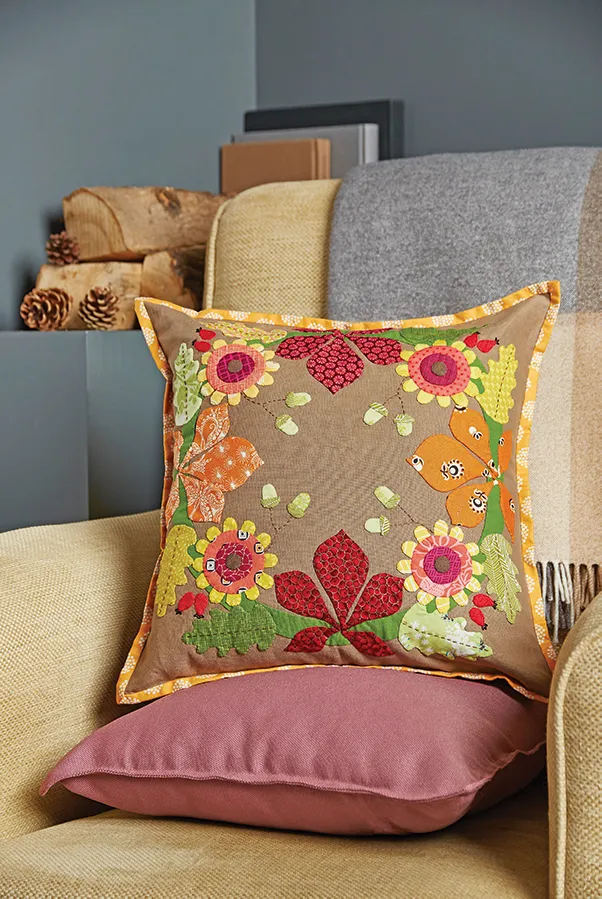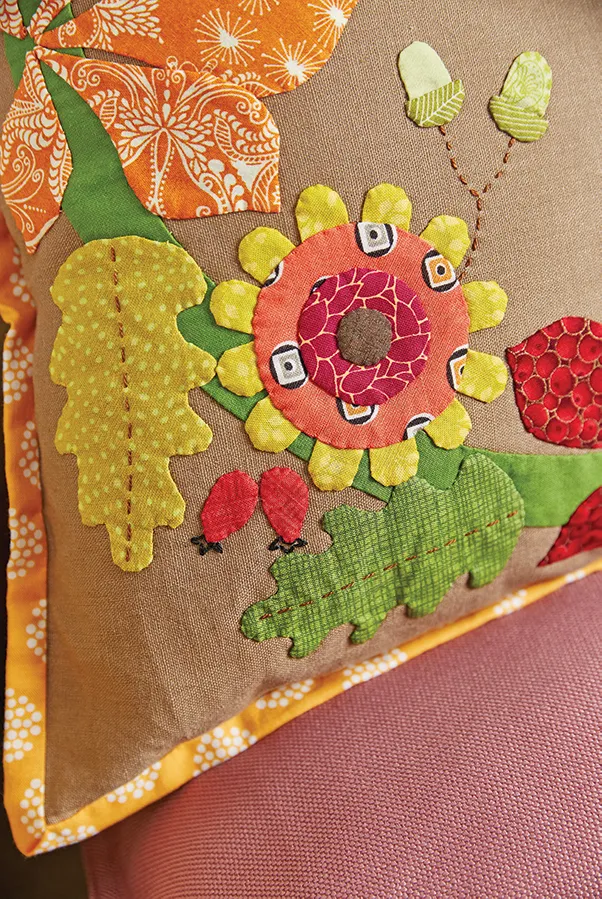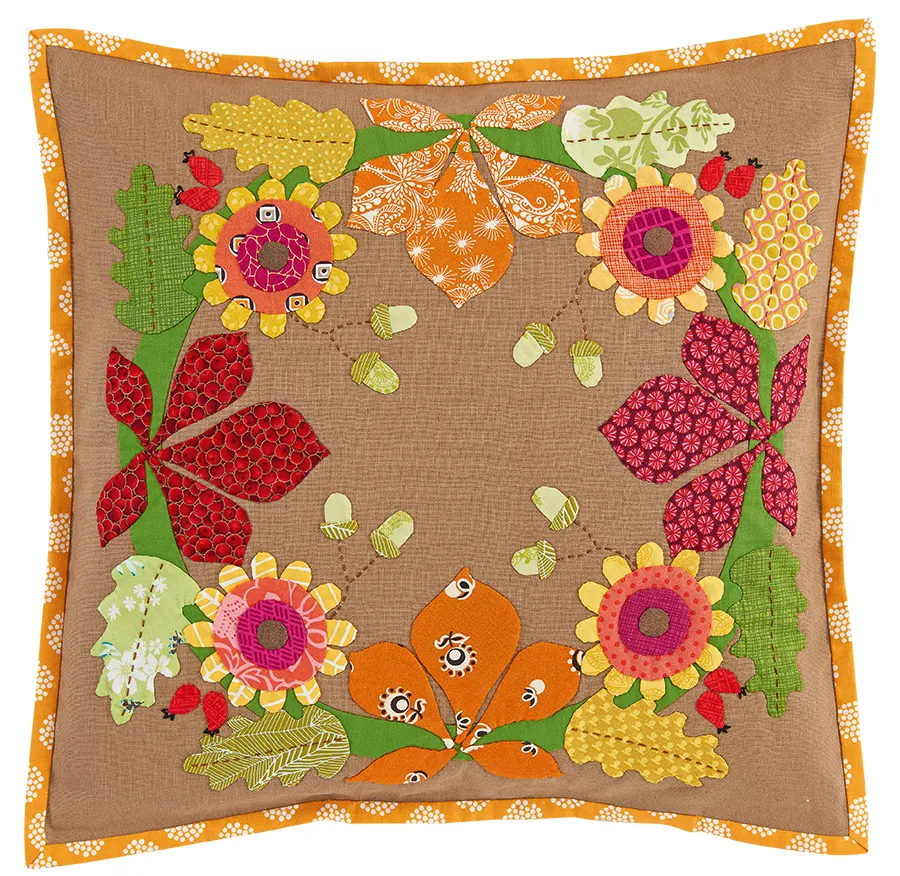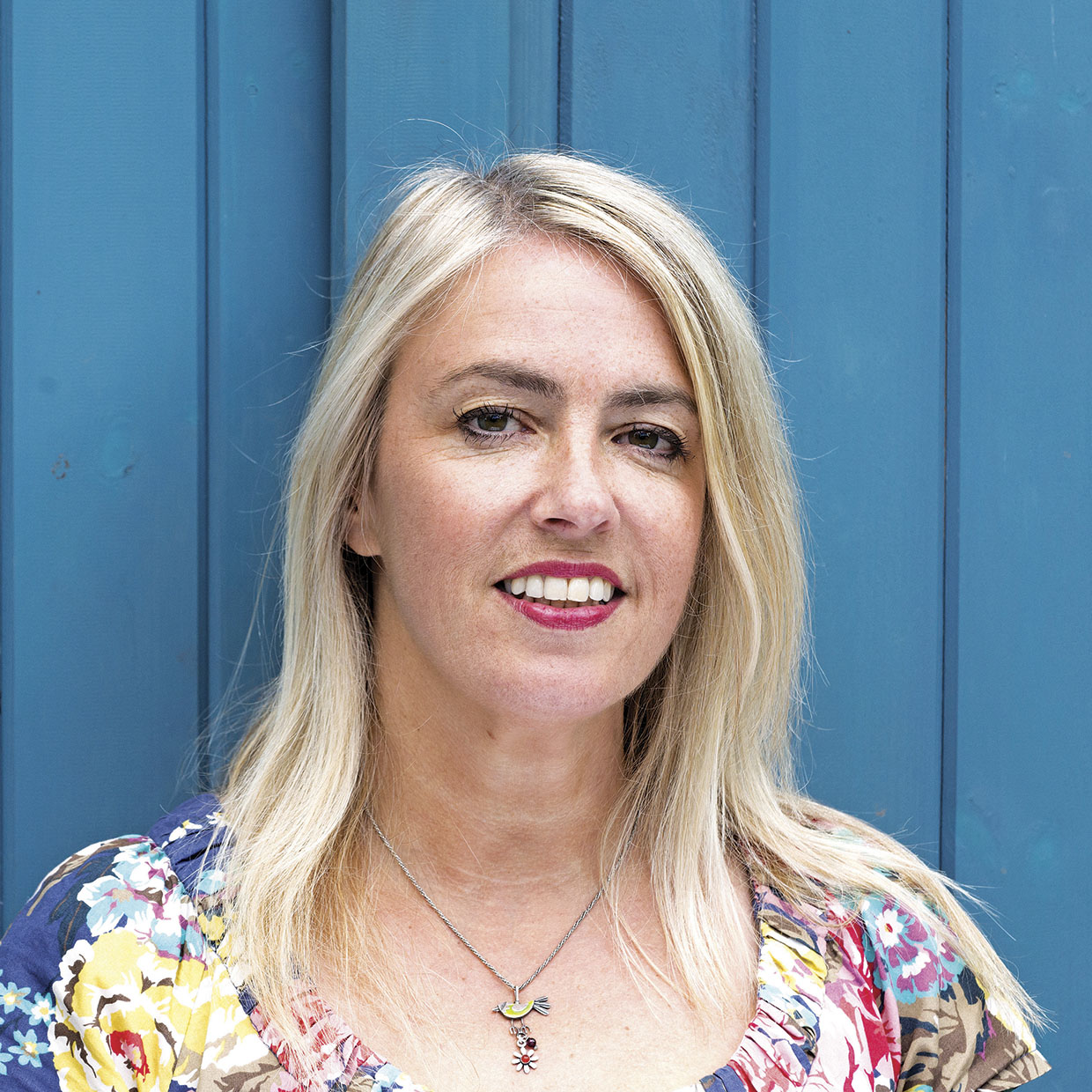Cutting out
Step 1
From the background fabric cut one (1) 17in square and two (2) pieces measuring 12in x 17in, put these two pieces aside for your backing
Step 2
Using your paper templates cut out the following pieces:
- Fold your square of stem fabric into four and use template A to cut one large ring.
- Four (4) horse chestnut large leaves from orange/red fabric using template B.
- Eight (8) horse chestnut medium leaves from orange/red fabric using template C.
- Eight (8) horse chestnut small leaves from orange/red fabric using template D.
- Eight (8) oak leaves from green/yellow fabric using template E.
- Forty-eight (48) chrysanthemum petals from yellow fabric using template F.
- Four (4) circles from coral fabric using template G.
- Four (4) circles from magenta fabrics using template H.
- Four (4) circles from brown fabric using template I.
- Eight (8) acorns from green fabric using template J.
- Eight (8) acorn cups from green fabric using template K.
- Eight (8) rose hips from red fabric using template L.
Tips for appliqué preparation
Step 1
There are many ways to tackle needleturn applique, I will be sharing a number of different methods over the course of this year-long project. This month we try iron-on interfacing for difficult shapes like the oak leaves.
Cut a 2½in x 4in piece of iron-on interfacing and the same from your chosen fabric. Trace the leaf shape onto the matt side of the interfacing using the inner dashed line of your oak leaf template (E).
Carefully cut out the leaf shape.
Place interfacing shiny side down on to the wrong side of your fabric.
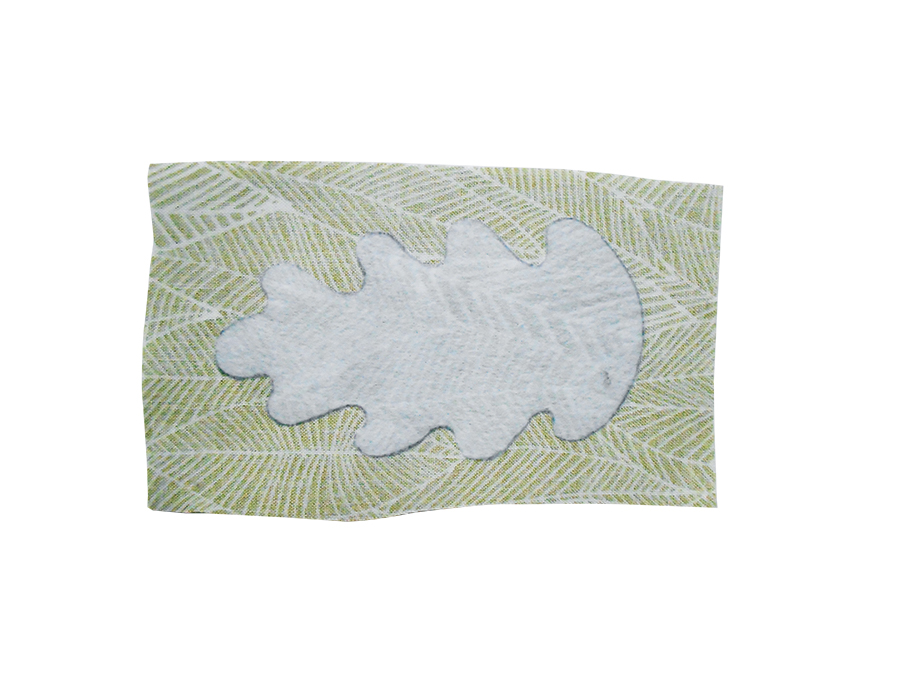
Press lightly from the fabric side (Fig 1). Make sure your iron is not too hot or it will melt the interfacing.
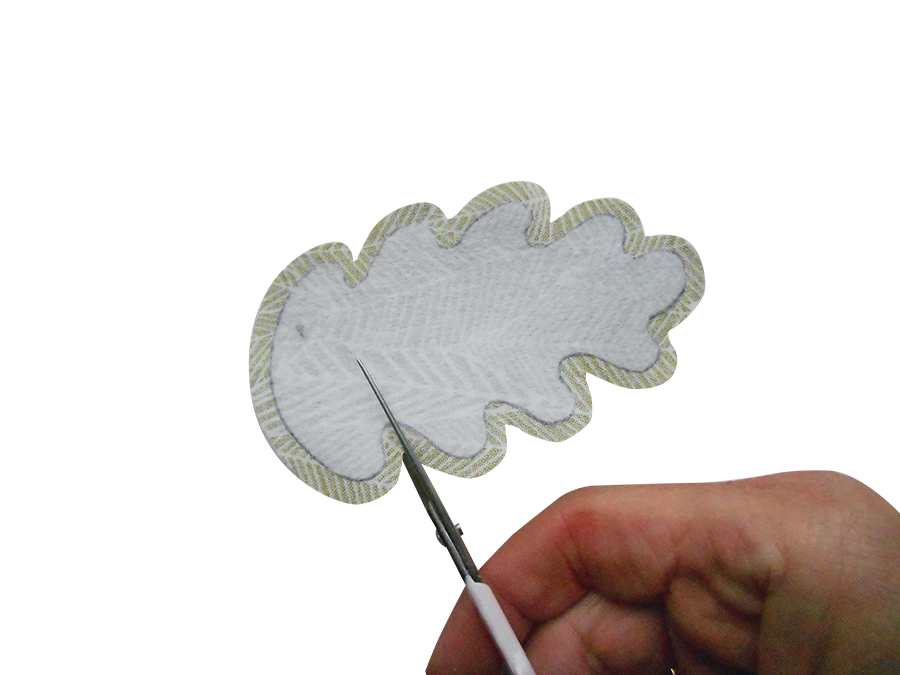
Cut around the leaf shape leaving a 3⁄16in seam allowance. Very carefully snip into all your inner curves almost but not quite up to the interfacing (Fig 2).
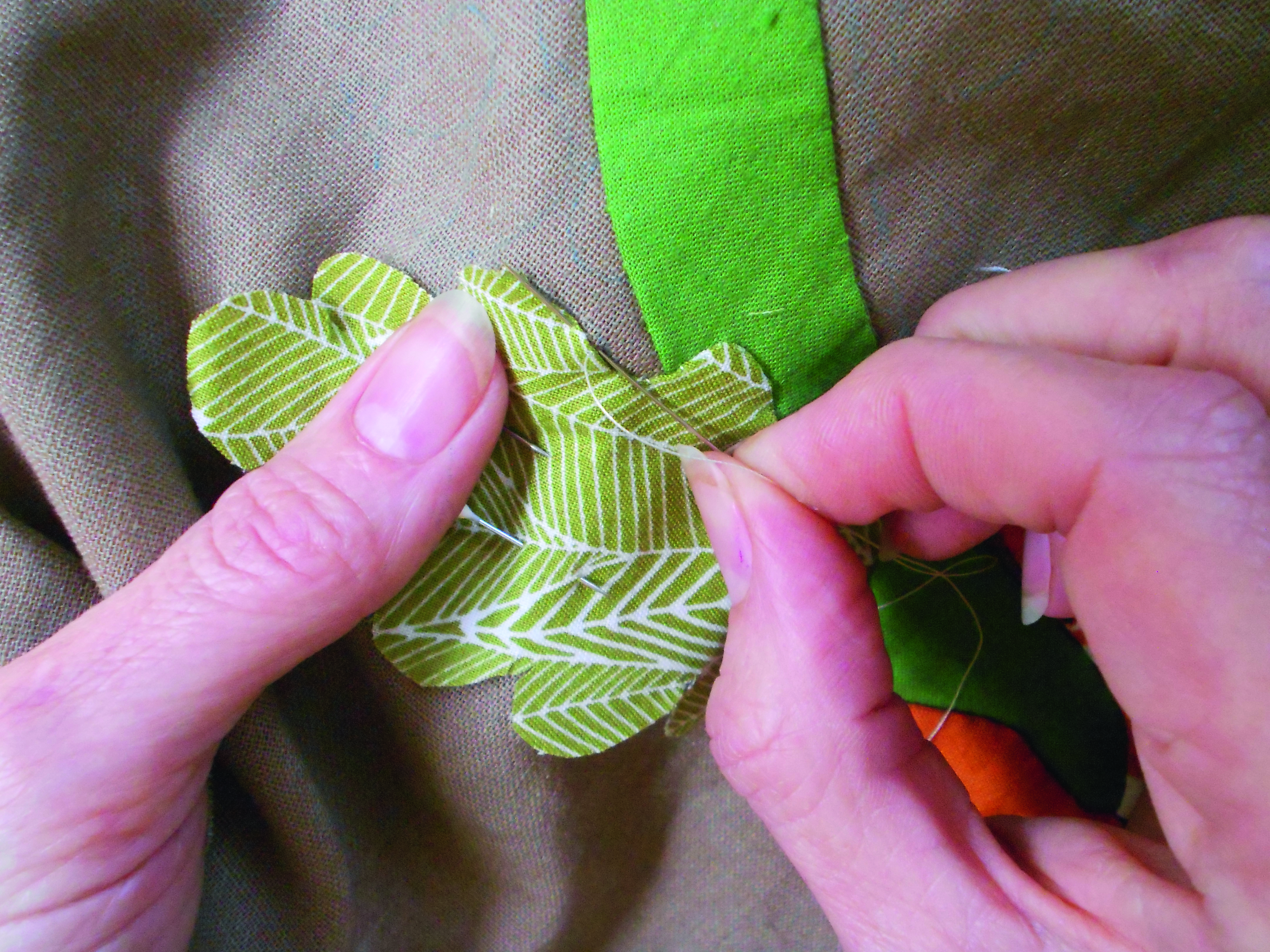
Pin in place and begin needleturn applique as before (Fig 3). You should find it much easier to get the exact shape of these difficult curves with the interfacing template to guide you. If you like this method you can try using it for all your pattern pieces here.
Making the cushion
Step 1
First trace the pattern on to the 17in background square using a pencil or removable pen such as a Pilot Frixion pen (which irons away). Fold the fabric square in half twice to crease a centre cross guideline. Trace the quarter circle pattern onto your fabric square one quarter at a time, using the folded lines as a guide. If you can’t see the pattern lines easily through the fabric try taping to a window, your computer screen with the light turned up or go over the pattern lines with a thicker pen. The pattern is just a guide and does not need to be too accurate.
Step 2
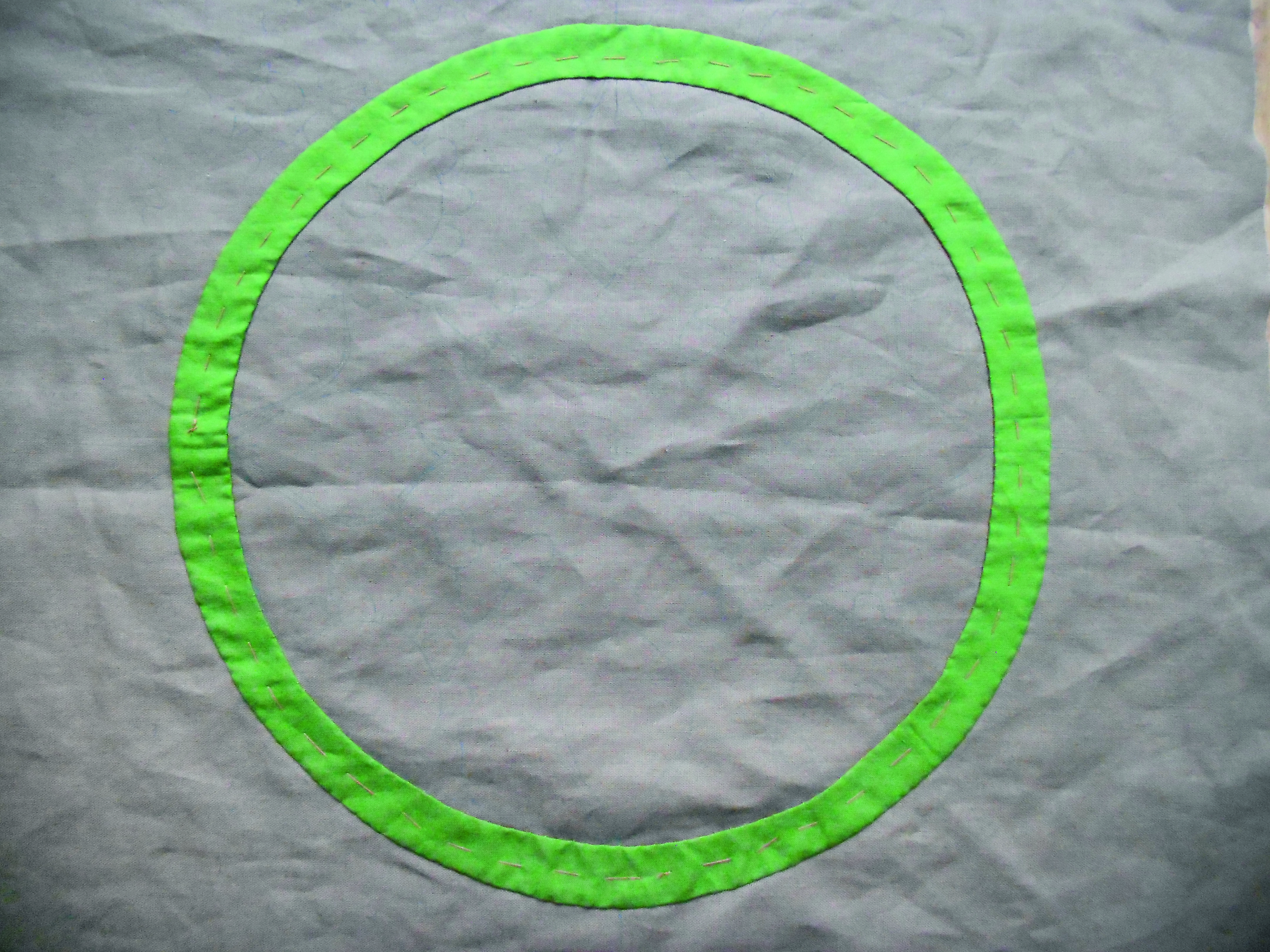
Begin by appliqueing the stem ring in place. Pin or tack in place then stitch down using a tiny neat slip stitch and matching thread (Fig 4), turning under the raw edges. Be careful not to stretch the fabric where it is cut on the bias.
Step 3
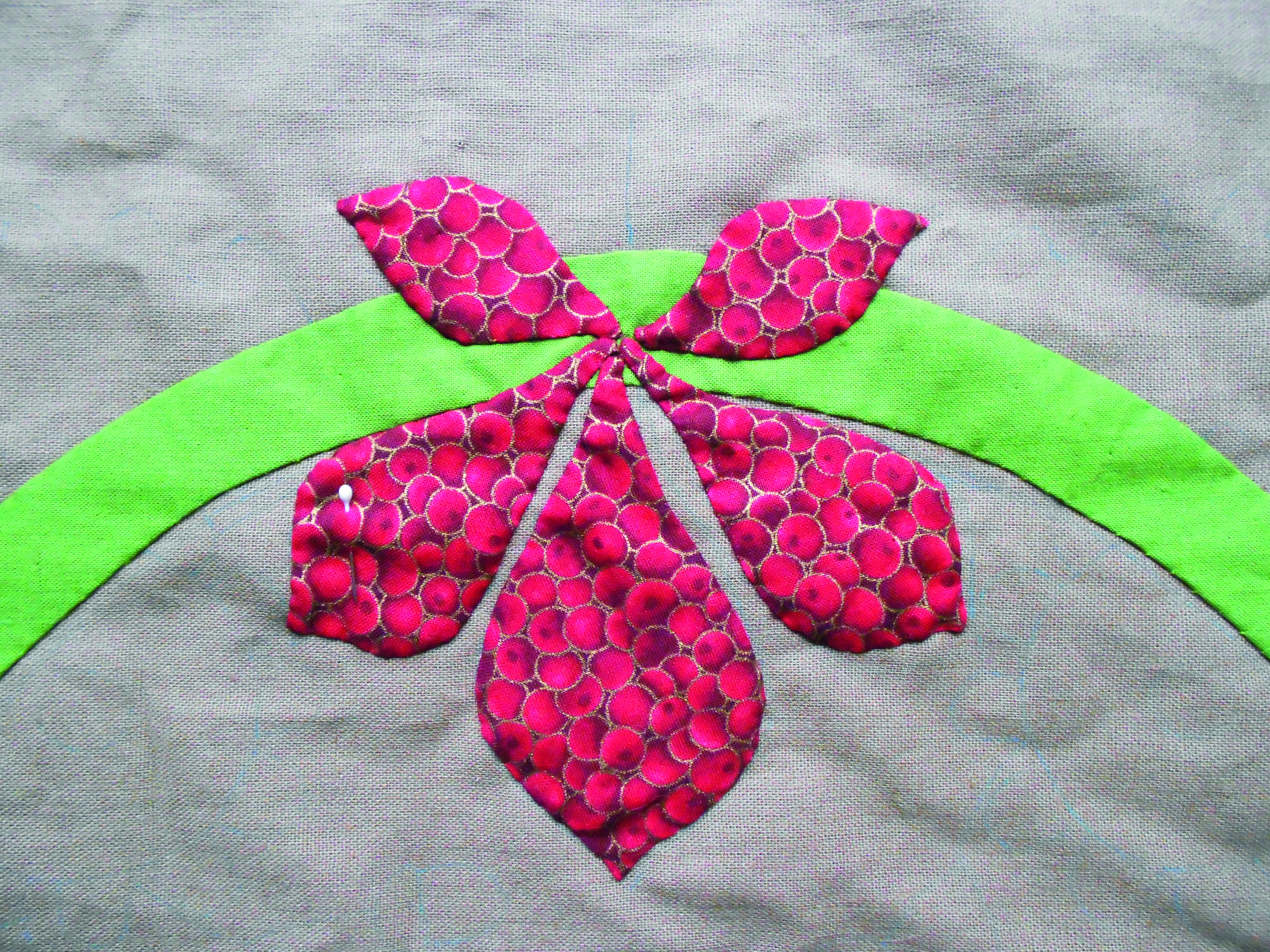
Pin your large horse chestnut leaf in place and stitch down as before, you will need to snip the slight curves a little. Stitch down the medium horse chestnut leaves either side making sure their stems nestle together. Add the small leaves as before to finish (Fig 5).
Step 4
Now add the oak leaves. You will need to snip these at all the inner curves before pinning down. You might like to try the interfacing method as described in the Tips for Applique section. If so add interfacing before you snip. Pin leaves in place and stitch as before.
Step 5
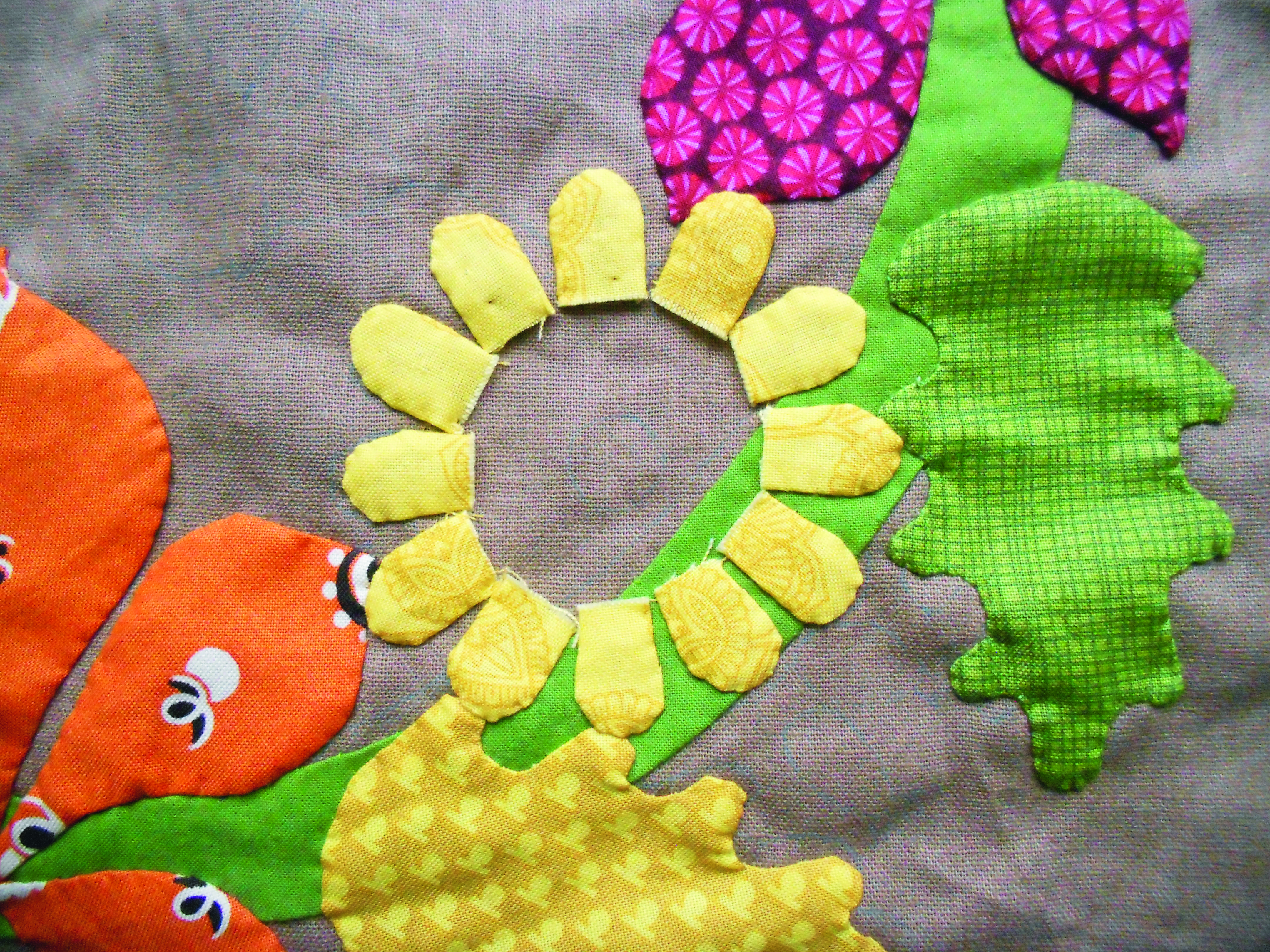
Once all the leaves and stems are in place, start stitching down the petals of each of the four chrysanthemums (Fig 6).
Step 6
To make the three chrysanthemum circles make a paper template using the inner seam allowance line from your circle template. With the wrong side of your matching fabric circle towards you and using a double thread, knot securely then sew a small neat running stitch all the way around and at the halfway point of your seam allowance. Place the paper template in the centre and gently draw up stitches and secure your thread. Press from both sides. Carefully pop the paper piece out and your circle is ready to stitch down.
Step 7
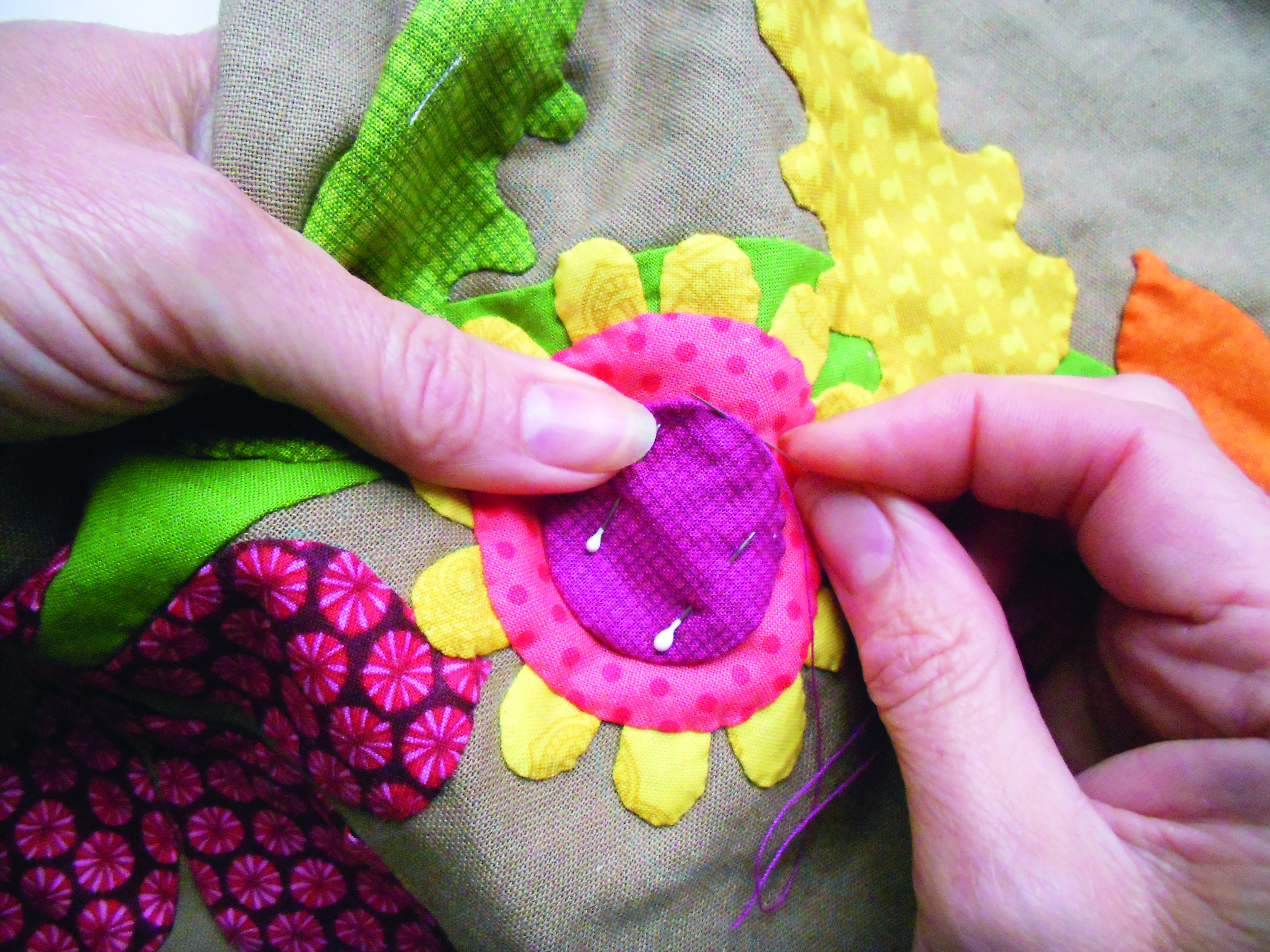
Once prepared, stitch the coral, magenta and brown circles one on top of the other over the chrysanthemum petals (Fig 7).
Step 8
Pin then stitch the acorns in place, followed by the acorn cups. Lastly applique the rose hips.
Step 9
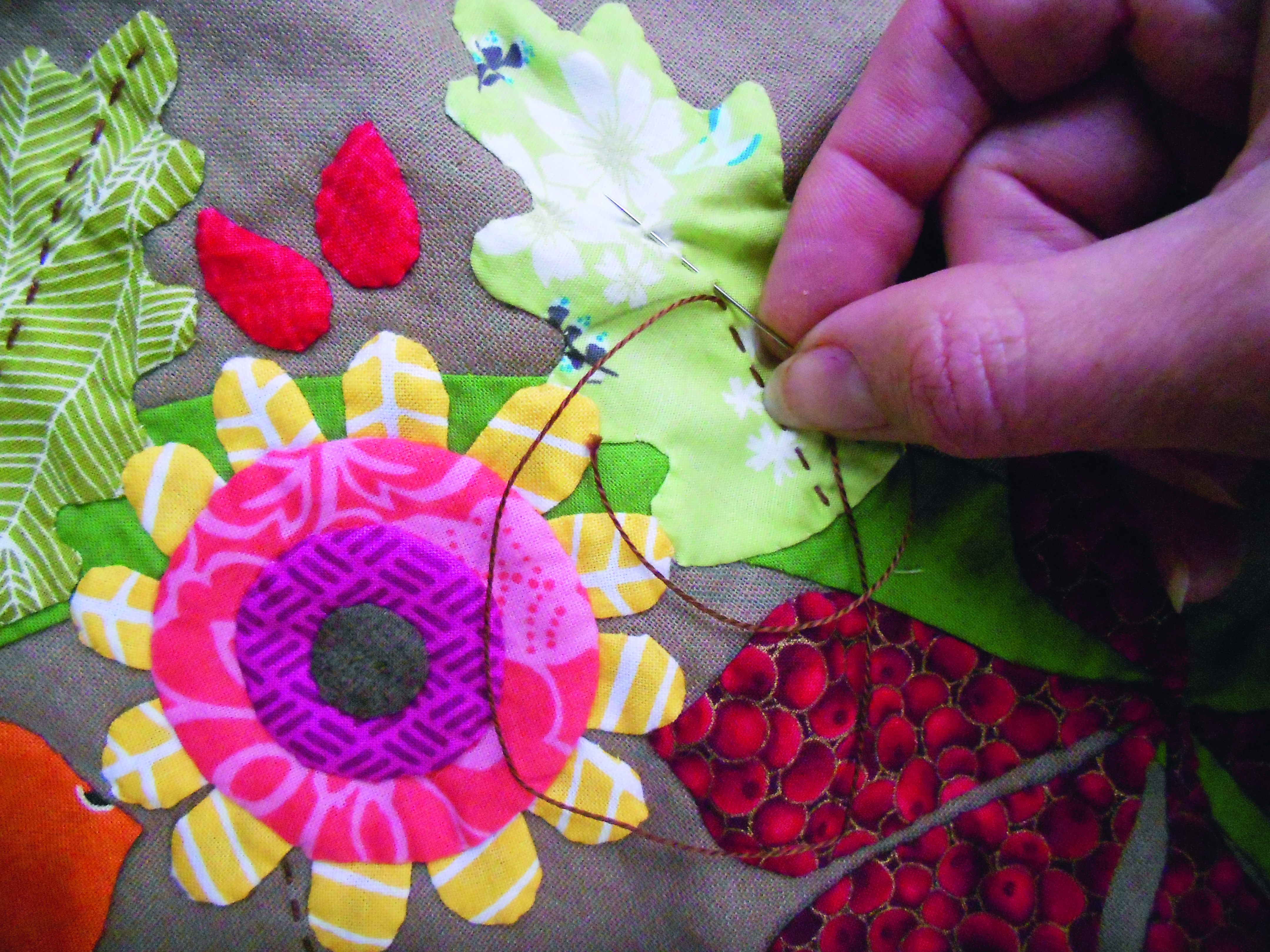
Using your brown perle cotton sew a running stitch along the stem lines joining acorns to garland. Sew lines of running stitches along the centre of the acorn leaves (Fig 8) (optional). Using black perle cotton sew some small backstitches at the top of the rose hips as indicated on the pattern. Press finished applique to remove any pen lines.
Finishing the cushion
Step 1
Take one of your pieces of cushion backing fabric and turn over a ½in twice on one of the 17in sides. Pin and then sew in place to hem. Repeat with the other backing piece. Press.
Step 2
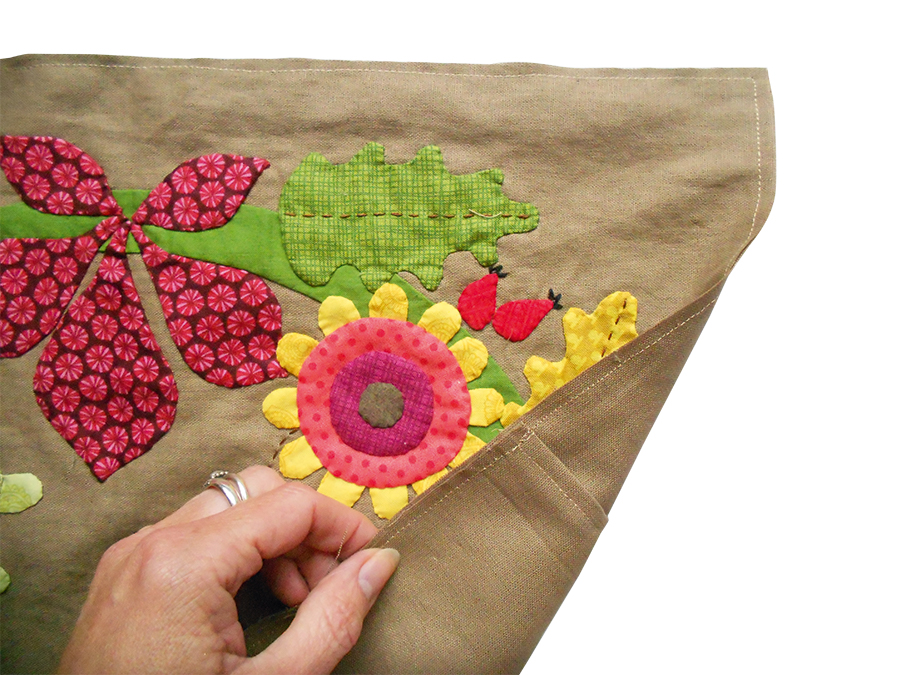
Lay the cushion front, right side down. Lay the two back pieces on top, right sides up and overlapping. Pin and then sew these layers together very close to their edges, less than ¼ in (Fig 9).
Step 3
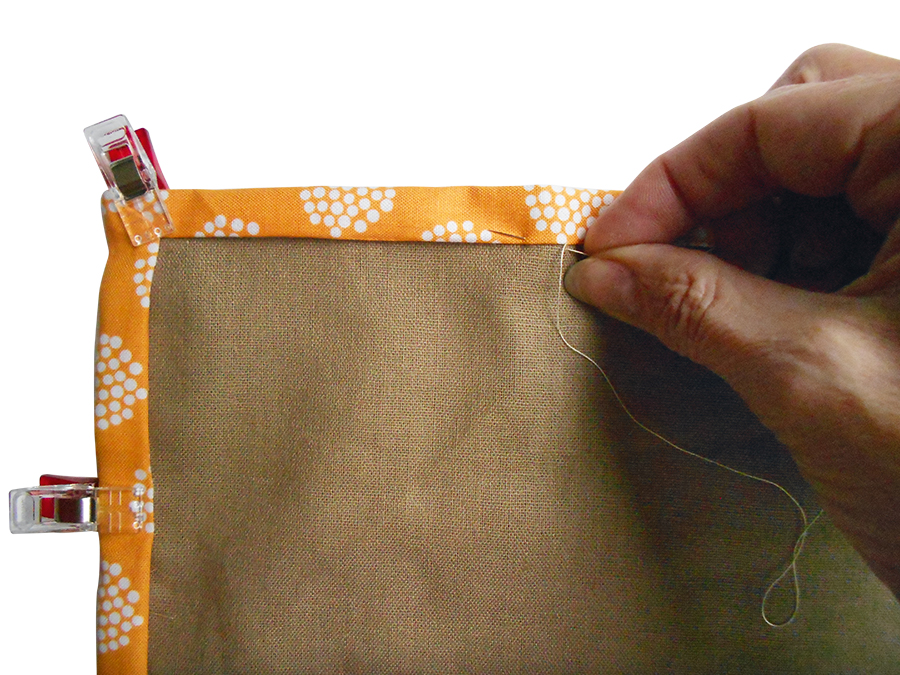
Prepare the binding by cutting two strips each measuring 2½in wide and then sewing these into one long length. Fold along the full length, wrong sides together and press. Use to bind the cushion (Fig 10). Insert cushion pad.
